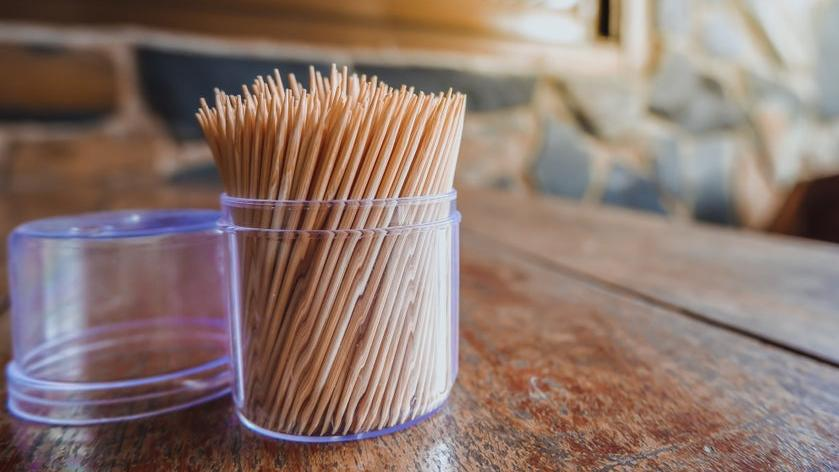Don't Eat Fried Toothpicks Because TikTok Told You To
The South Korean health ministry is asking people not to eat toothpicks after a TikTok trend went viral.
TikTok food trends can encourage people to eat some pretty unusual things sometimes. But while most of TikTok's most bizarre viral snacks are relatively harmless, the South Korean health ministry is warning people to disregard the latest recommendation flying around the platform. Who's hungry for some fried toothpicks?
People are frying up toothpicks and eating them
NBC News reports that people in South Korea have been deep-frying toothpicks and eating them, thanks to videos floating around on TikTok in which people add seasoning to the fried sticks and munch on them as a snack. These toothpicks aren't made of wood, like you're probably imagining. Instead, they're manufactured from sweet potato or corn starch—a biodegradable, more environmentally friendly option than wood. And since those starches are also commonly found in snacks, people apparently believe that the toothpicks themselves are edible.
Because of their base material, the toothpicks puff up in hot oil and turn into curly, crunchy, worm-shaped puffs, almost resembling Funyuns. These toothpicks have green food coloring added, which gives the end product even more of an arresting look.
The South Korean health ministry is warning the public not to eat toothpicks
In a post on X, a (likely frustrated) South Korean health ministry advised people stop eating deep-fried toothpicks. NBC News notes that the post translates as saying, "This is not a product to eat! The starch toothpick is a sanitary product! Their safety has not been verified."
#녹말이쑤시개 먹는 제품이 아닙니다! ❌
녹말이쑤시개는 #위생용품 입니다!
위생용품은 성분·제조방법·용도에 대한 기준·규격에 따라 안전성이 관리되고 있으나 #식품으로서 안전성은 검증된 바 없습니다. #섭취하지마세요! ❌ pic.twitter.com/OPNMDc1ofq— 식품의약품안전처 (@TheMFDS) January 24, 2024
Since it's not a specifically food-grade starch, no one can account for whether it's okay to consume. I can certainly stand behind some TikTok trends, but knowing how people operate on the internet, I'm sure many people will continue doing this kind of thing not just to sate their curiosity, but also for social media clout. I think the mistake we all made was assuming that people would film themselves eating actual food, and maybe not a household item meant to improve your oral health.
